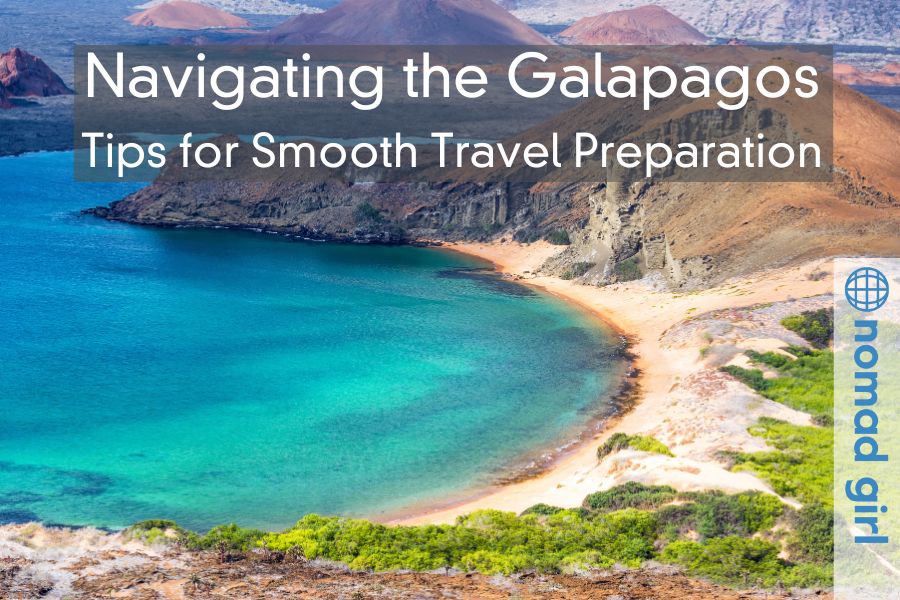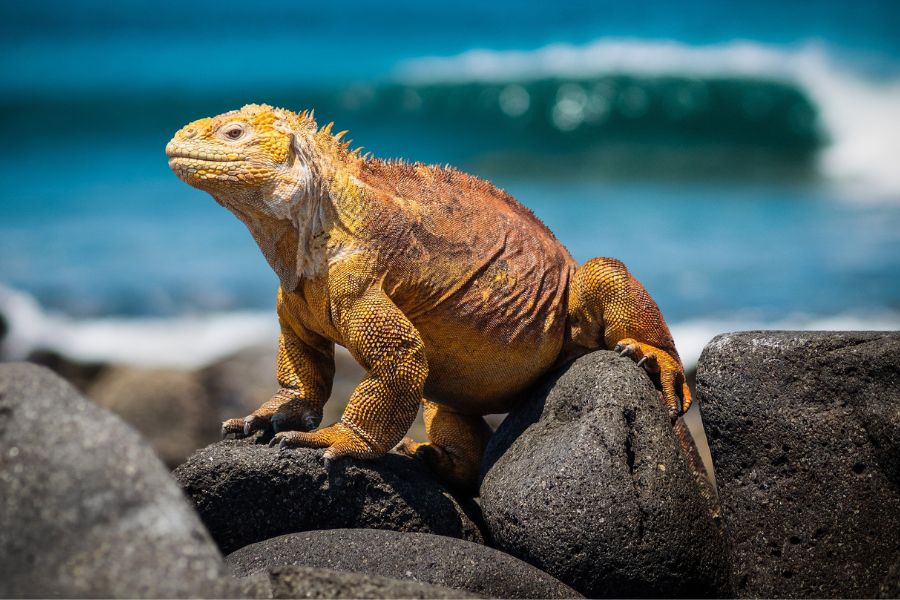The Galapagos Islands—just hearing their name stirs the soul of any wanderlust-filled traveler. This archipelago, with its mystical allure and unrivaled biodiversity, tempts adventurers from all corners of the globe.
From the infamous giant tortoises lumbering about as if time holds no meaning, to the dramatic volcanic landscapes rising from the ocean, the Galapagos calls to those seeking a world untouched by time.
But before you pack your bags and head off, there are a few crucial things to keep in mind for smooth sailing, so to speak, through these enchanted islands.
Getting the Lay of the Land (and Sea)
The Galapagos Islands, aren’t your average vacation spot. Located some 600 miles off Ecuador’s coast, this group of 19 volcanic islands is famous not only for its stunning, otherworldly beauty but also for the ecological tightrope it walks.
Conservation here is king, and rightly so. These islands are home to wildlife that you simply won’t see anywhere else on this spinning globe—so preparations need to be made accordingly. Think of it like prepping for a dance with nature where every step counts.
Getting Around the Islands – Transportation Options
No, you won’t be flagging down taxis or hopping on a city bus here. Getting around the Galapagos requires a bit more flair. One of the most popular ways to explore these islands is by hopping aboard by taking luxury Galapagos cruises.
These floating sanctuaries offer a combination of ease and education. You’ll glide between islands, all the while being guided by experts who know their marine iguanas from their lava lizards. The cruise will handle all the logistics, and you can focus on soaking in the jaw-dropping scenery.
However, if you’re not one for cruise ships, smaller boats—locally known as “pangas”—are available for hire. These little motorized boats get you to those quiet, unspoiled corners where the wildlife is the star of the show.
And for the high-flying traveler, there’s always the option to take inter-island flights. It’s the quickest way to island-hop, though you’ll miss out on those lazy, serene boat rides that seem to slow down time.
When to Go—Weather, Wildlife, and Wow Factor
While the Galapagos technically enjoys a year-round tropical climate, the weather isn’t one-size-fits-all. Depending on what you want to see, the timing of your trip might make all the difference. Like choosing the right wine to pair with a meal, choosing the right season for your visit can completely enhance your experience.
The warm, rainy season from December to June brings lush greenery and is ideal for birdwatchers as it’s prime breeding time. Want to catch a glimpse of marine creatures like whales and dolphins? Then the cool, dry season from July to November is your ticket.
But Mother Nature has her plans sometimes, and El Niño events can affect sea temperatures and wildlife sightings. So, be sure to do your homework ahead of time.
Think of it as planning a dinner party with unexpected guests—anything can happen!
Permits, Fees, and Those Pesky Regulations
Let’s be honest—paradise comes with its price tags. To protect the islands, the Ecuadorian government regulates visitor access through the National Park.
Upon arrival, you’ll need a permit, which helps to control the number of tourists and ensure the islands stay as pristine as possible. It’s like having a bouncer at nature’s club. Be prepared to pay an entrance fee to the Galapagos National Park as well as additional site-specific fees depending on your itinerary.
This isn’t a place to skimp on planning. Some of the most coveted locations on the islands have limited visitor slots, so if you want to experience those, don’t leave it to chance.
Book well in advance and avoid any unwanted disappointment—because missing out on a trip to see the giant tortoises is like being stood up at the altar.
What to Pack – Essentials and Eco-Friendliness
Packing for the Galapagos is less about the number of swimsuits you bring and more about your preparedness for everything nature throws at you. Here’s a tip: go light, but go smart. First things first, pack for comfort and sustainability.
With limited resources available on the islands, it’s important to think about your environmental footprint. Swap out single-use plastics for reusable items—bring along a sturdy water bottle, reusable straws, and bags for good measure. The ecosystem here is fragile, and even the smallest choices can make a big impact.
Don’t forget your walking shoes—comfortable ones! You’ll be traipsing over volcanic rocks, sandy beaches, and forested paths. Quick-drying clothing will be your best friend when you’re hopping in and out of boats, swimming with sea lions, or just escaping the tropical rains.
Of course, don’t leave your sun protection at home. The equatorial sun is fierce, so pack reef-safe sunscreen to avoid harming marine life, and a waterproof bag for your gadgets. There’s nothing worse than dropping your phone into the Pacific after snapping that perfect shot of a blue-footed booby.
Staying Safe – Be a Good Guest
You wouldn’t trample through a friend’s garden, so don’t do it here. The Galapagos are a delicate ecosystem, and it’s crucial to respect the rules laid down by the National Park. Keep your distance from wildlife—this isn’t a petting zoo, and the animals should be admired from afar.
Look, but don’t touch. Imagine strolling through a gallery—would you put your hands all over the priceless paintings? Exactly.
Stay safe by staying aware. This means staying hydrated (that sun again!), wearing appropriate gear, and following instructions from your guides.
When you’re not in the wild, do your bit to support the local economy. Shop from local vendors and eat where the locals do. It’s a small way to contribute to the islands’ economy and protect their unique way of life.
Diving Into the Wildlife
The Galapagos are an absolute feast for the eyes. You’ll find creatures here that look like they’ve wandered out of a dream. Marine iguanas basking on the rocks, giant tortoises munching on the grass, and frigatebirds soaring high above.
Snorkelling and diving are musts for anyone who wants to see beneath the surface—literally. Once underwater, you might come face-to-face with hammerhead sharks, playful sea lions, or schools of colourful fish.

And let’s not forget the landscapes! From stark volcanic formations to lush highlands, each island offers a unique flavor. Some islands are as barren as the surface of the moon, while others are alive with greenery and birdlife. It’s like walking through the pages of an encyclopedia—each stop brings a new discovery.
Immersing Yourself in Local Culture
The islands aren’t just about wildlife, though. There’s a deep human history here too. Locals have lived on the islands for centuries, creating a culture that’s as fascinating as the wildlife itself. Don’t miss the chance to interact with local communities, taste traditional foods, and experience their unique way of life.
It’s like peeling back another layer of the Galapagos story. And if you really want to leave your mark (in a good way), consider joining an eco-tour or even volunteering with local conservation projects. Giving back is the best souvenir you can take home.
Conclusion – Preparing for the Adventure of a Lifetime
Travelling to the Galapagos Islands is like stepping into another world, where time slows down, and the wonders of nature unfold before your eyes.
But it’s a world that requires respect, preparation, and a deep appreciation for the fragile balance that allows it to exist.
By planning smart, packing right, and being a responsible traveller, you’re ensuring that future generations can experience the magic of these islands just as you have.



















